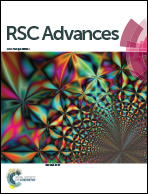Theoretical investigations of thermoelectric phenomena in binary semiconducting skutterudites
Abstract
In this study, we explored the thermoelectric properties of the host thermoelectric materials (TM), namely, binary skutterudites, using a combination of simulations based on density functional theory and post-DFT Boltzmann's semiclassical theory. The calculations were performed close to the Fermi surface for the Seebeck coefficient and other thermoelectric parameters. Our results demonstrated that CoSb3 exhibited the highest Seebeck value at room temperature among all the compounds (CoP3, CoAs3, CoSb3, IrP3, IrAs3, IrSb3, RhAs3, and RhSb3), which confirmed that this compound is an ideal host material for thermoelectric applications. Furthermore, the calculated electrical conductivity values show that RhAs3 has the largest value of 3.736 × 105 Ω−1 m−1. However, at high temperatures, the Seebeck values for all of these compounds are almost constant due to the activation of the minority charge carriers.



 Please wait while we load your content...
Please wait while we load your content...